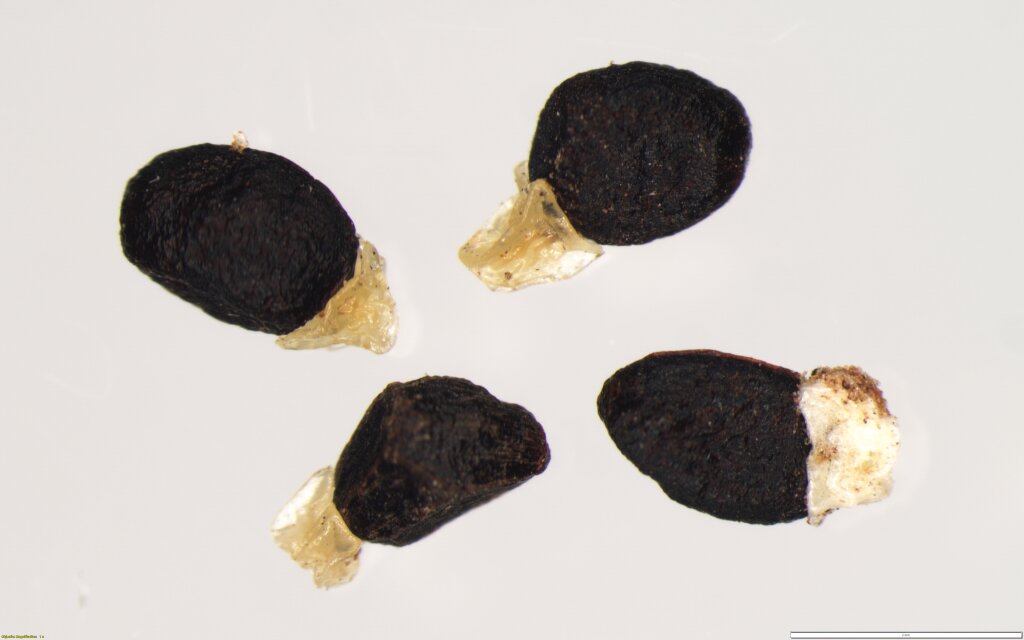Commersonia rugosa
(Steetz) F.Muell.Shrub to 2 m high. Leaves ovate to narrowly ovate, 0.5–5 cm long, 0.2–1 cm wide, irregularly toothed, becoming serrulate, upper surface green, moderately to densely stellate-hairy, undersurface fawn-green to greenish-white, densely stellate-tomentose, with long and short hairs; petiole 1–5 mm long. Inflorescence 2–15-flowered. Calyx segments 3.5–6 mm long, 2–2.5 mm wide, stellate-hairy on both surfaces; petals c. half as long as calyx segments, often somewhat stellate-hairy; anther filaments usually with stellate hairs, rarely glabrous; staminodes 5, stellate hairy. Capsule 6.5–14.5 mm diam., densely stellate hairy; setae 3.5–4.6mm long, present through fruit surface; shaft of setae with dense simple or stellate eglandular hairs in lower two-thirds and glandular trichomes to 0.5 mm long in upper third; apex of setae with erect and horizontal hairs to 0.5 mm long. Flowers Aug.–Nov.
EGL. Also NSW. First recorded in Victoria in 2020 following the 2019 bushfires, where growing on rocky terrace beside the Genoa River near Wangarabell in burnt riparian scrubland.
Closely resembles C. breviseta and C. dasyphylla, and it seems almost incomprehensible that all three species could occur in Victoria, each only known from one or only a few records and each species only seen following fire. However, C. rugosa may be distinguished from C. breviseta by the capsules with longer setae (>2 mm long), and from C. dasyphylla by the more densely stellate capsules with short erect and horizontal hairs at the setae tip (c.f. long reflexed hairs at the setae tip).
 Spinning
SpinningWilkins, C.F.; Whitlock, B.A (2011). A revision of Commersonia including Rulingia (Malvaceae s.l. or Byttneriaceae). *Australian Systematic Botany * 24(5): 226–283.
